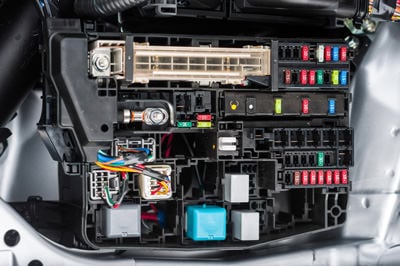Leading Tips for Effective Electric System Troubleshooting
Fixing electrical systems calls for a systematic approach, grounded in a thorough understanding of electrical principles and safety protocols. The nuances of effective fixing prolong past simple technological expertise; recognizing just how to record searchings for and focus on safety and security can significantly influence outcomes.
Understand the Basics
Understanding the basics of electric systems is essential for reliable troubleshooting, as a strong structure permits specialists to diagnose and deal with issues much more effectively. An extensive grasp of electrical principles, such as voltage, current, resistance, and power, is crucial in determining the origin of issues. Voltage is the electrical possible distinction that drives existing with a circuit, while resistance opposes the circulation of existing, affecting the general functionality of the system.
Experience with circuit elements, including resistors, capacitors, diodes, and switches over, is likewise critical. Each component plays a distinctive function in circuit behavior and can influence efficiency when malfunctioning. Additionally, recognizing collection and parallel circuit arrangements is important, as these arrangements affect the circulation of voltage and current within the system.
In addition, understanding of safety and security protocols is crucial. Service technicians must understand potential risks, such as shock and brief circuits, to implement risk-free troubleshooting techniques. By grasping these fundamental concepts, specialists boost their ability to carry out reliable diagnostics and repairs, ultimately causing boosted performance and dependability of electric systems. This fundamental knowledge is the foundation of effective repairing endeavors.
Gather Necessary Tools
Effective troubleshooting of electrical systems requires the best set of tools to diagnose and deal with problems accurately. A well-appointed professional can significantly enhance efficiency and performance in recognizing issues. Crucial devices consist of a multimeter, which gauges voltage, present, and resistance, allowing for precise evaluations of electric elements. Clamp meters are also valuable for gauging existing without detaching the circuit, guaranteeing safety and convenience.
In addition, shielded hand devices such as screwdrivers, pliers, and cable strippers are crucial for securely controling electric links. It is also recommended to have a circuit tester on hand to confirm the presence of voltage in electrical outlets and cables. For even more complex systems, a thermal imaging video camera can help find overheating components, showing potential failings.

Comply With an Organized Technique
Having actually collected the appropriate devices, the next step in troubleshooting electrical systems is to comply with an organized strategy. A systematic approach makes certain that technicians can identify mistakes successfully and properly, decreasing downtime and protecting against unnecessary repairs.
Begin by evaluating the system's schematic diagrams and requirements. This entails monitoring each element systematically, starting from the power resource and functioning towards the load.
Utilize testing equipment, such as multimeters and oscilloscopes, to collect unbiased data concerning voltage, existing, and resistance at different points within the system. This empirical proof will lead your troubleshooting efforts and help to verify or eliminate possible reasons of failure.
In addition, think about ecological aspects that may affect the system's performance, such as Read More Here temperature level fluctuations or dampness ingress. An extensive examination of electrical wiring, links, and elements will certainly make sure that all opportunities are represented.
Document Your Findings
Comprehensive documents is important in the repairing process of electric systems. Accurate documents enhance the performance of determining persisting issues and help with communication amongst employee. Each finding must be carefully noted, including symptoms observed, examinations carried out, and the end results of those tests. electrical system troubleshooting. This method not just help in understanding the root reason of the trouble but also acts as a referral for future troubleshooting efforts.

Additionally, keeping a log of components changed or fixings done is vital. This info supports inventory monitoring and can assist evaluate the longevity and reliability of details elements.
Ultimately, the documentation procedure ought to be extensive yet concise, enabling very easy retrieval and evaluation - electrical system troubleshooting. By prioritizing thorough documents, technicians can develop a useful knowledge base that not just aids in current troubleshooting yet likewise empowers future upkeep efforts, therefore enhancing overall system article source dependability

Prioritize Security Steps
Recognizing the fundamental dangers connected with electric systems is crucial for making certain security throughout troubleshooting. Electric shock, burns, and tools damage are simply a few of the possible risks that professionals deal with. Focusing on precaution is not just a lawful obligation however additionally a moral imperative that safeguards both the service technician and the surrounding setting.
Before commencing any type of troubleshooting job, technicians ought to put on ideal individual protective equipment (PPE), including protected handwear covers, safety and security glasses, and flame-resistant clothing. Making sure that the workplace is completely dry and free of clutter can dramatically reduce the risk of mishaps. It is essential to de-energize circuits before beginning any type of job, validating that they are not live through the use of a multimeter or voltage tester.
Establishing clear communication procedures with staff member is likewise crucial; this makes sure that everybody is conscious of prospective company website dangers and the condition of the electric system being dealt with. Finally, having an emergency situation action plan in position can prove vital in the occasion of an event. By prioritizing security steps, specialists can effectively minimize dangers and promote a safer office.
Final Thought
Effective electric system fixing relies upon a comprehensive understanding of basic principles and a systematic technique. By gathering essential devices, adhering to organized assessment techniques, and thoroughly documenting findings, the fixing process comes to be much more reliable and trustworthy. Prioritizing safety and security steps makes certain the wellness of people entailed and the integrity of the electric system. Executing these methods will improve the troubleshooting experience, causing quicker resolutions and improved functional efficiency in electrical systems.